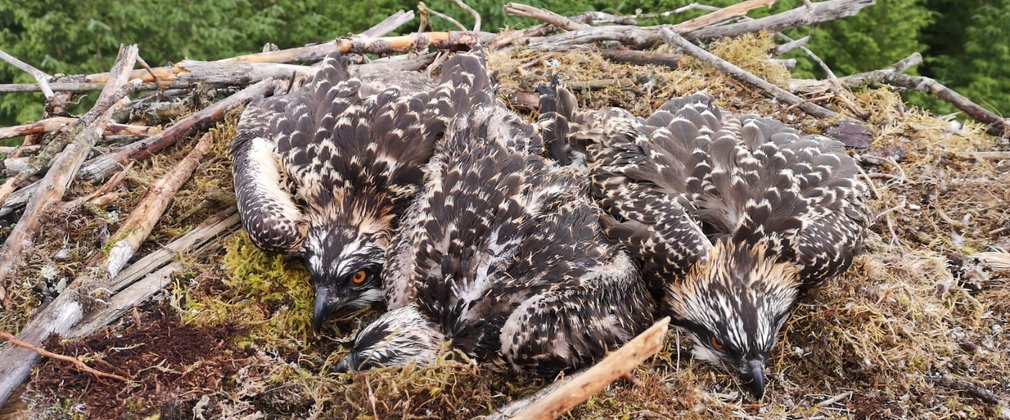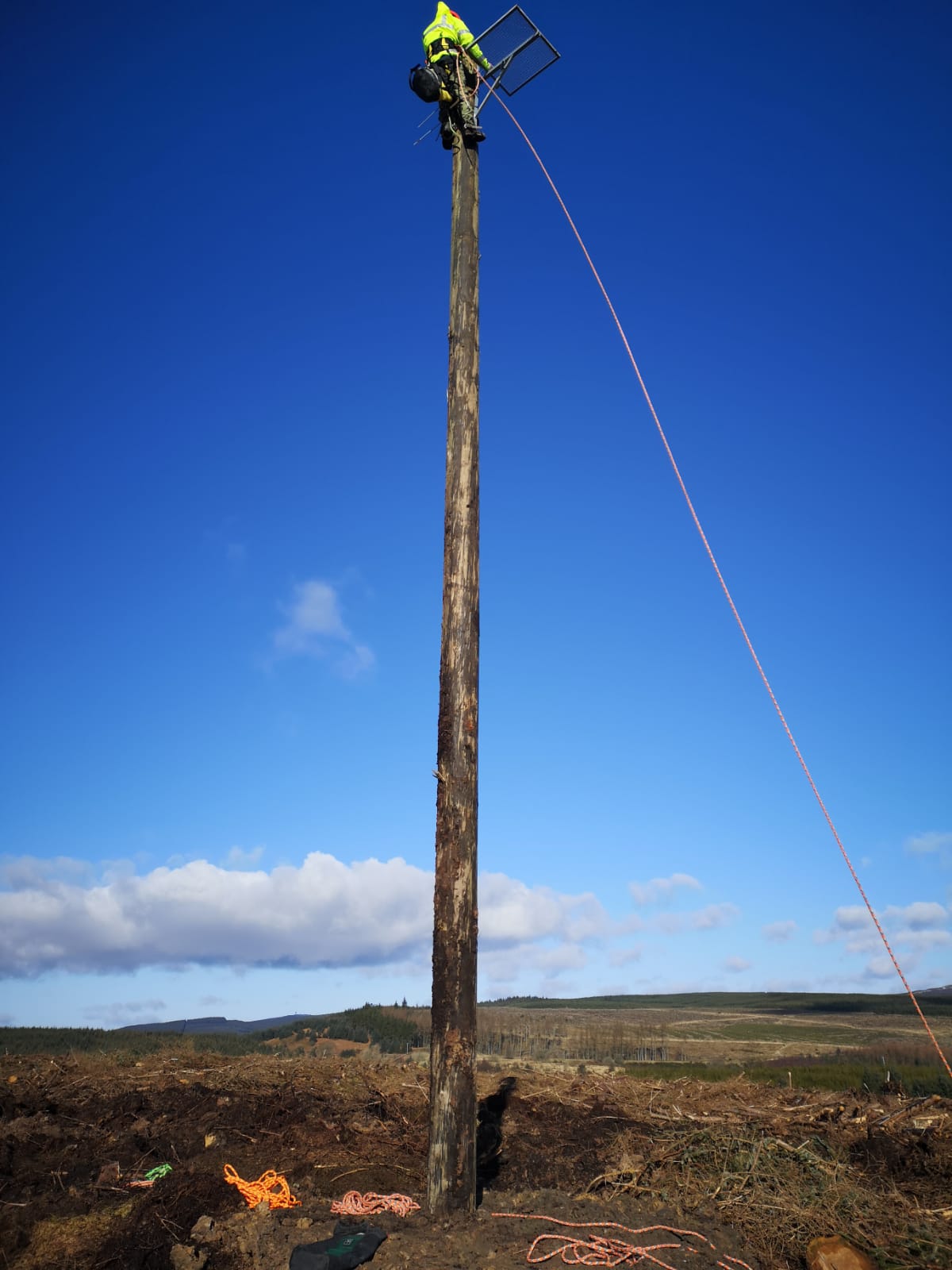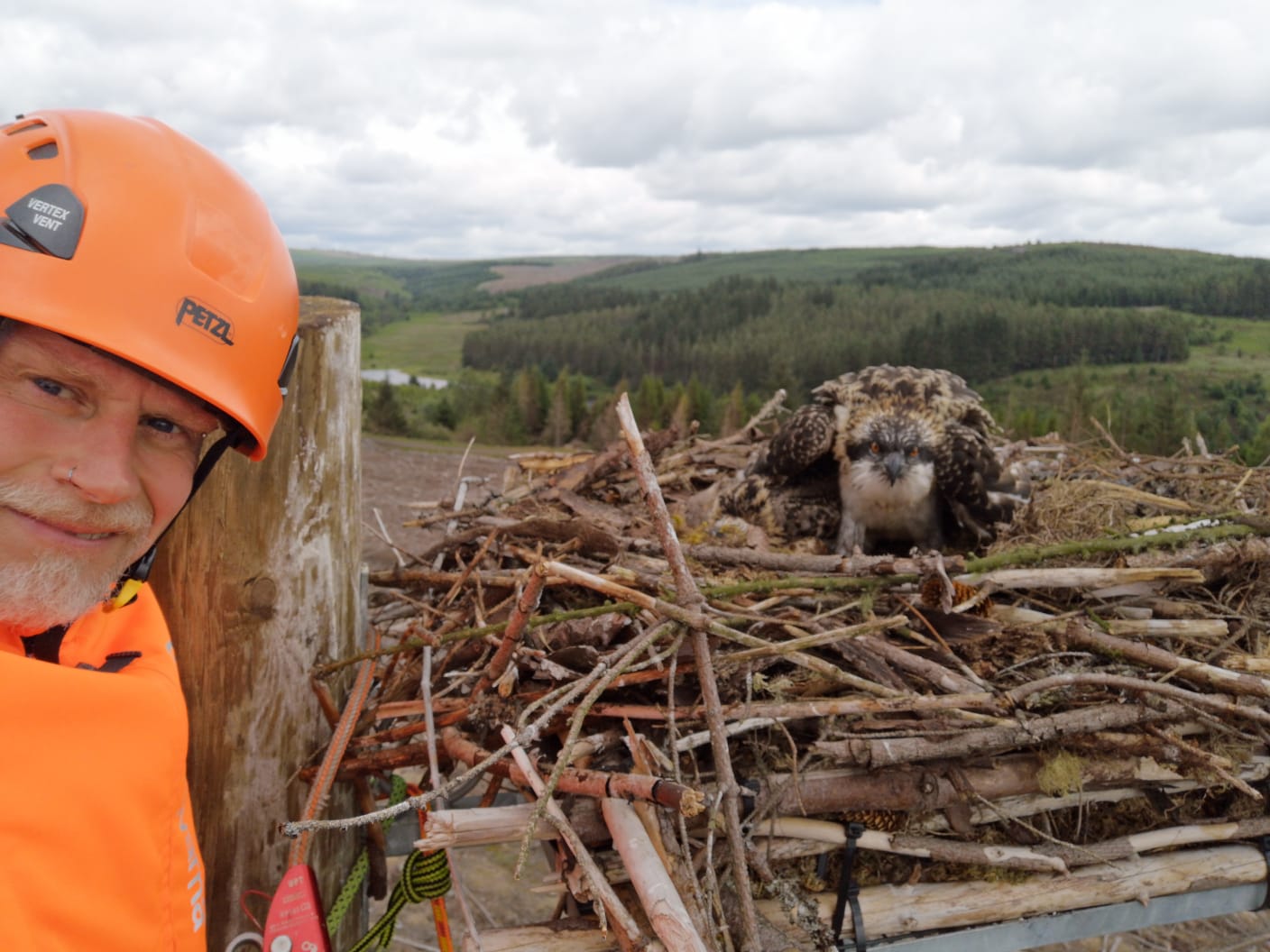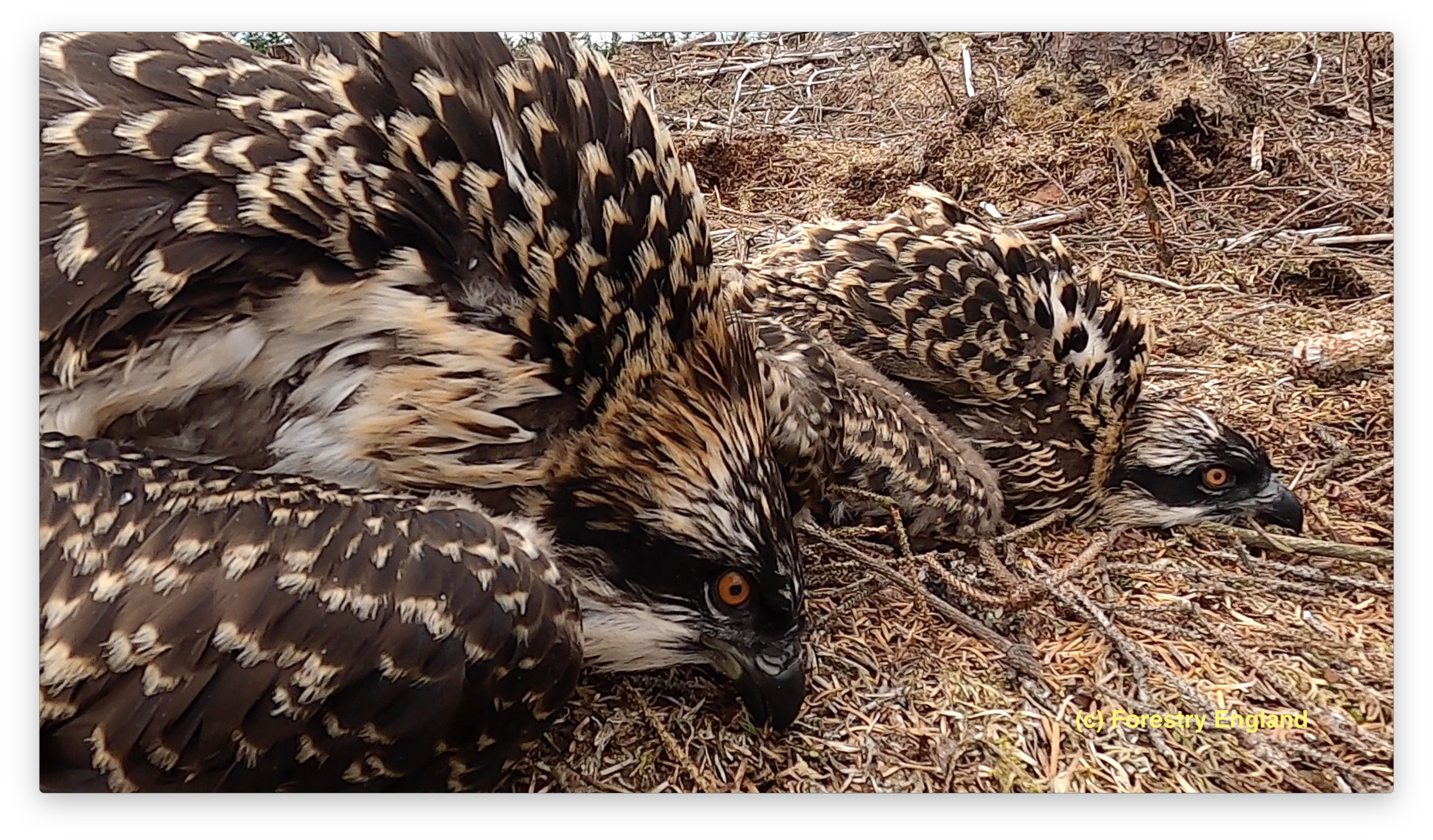
A ringing success! Kielder osprey chicks are ringed and named
July is an exciting time for everyone involved with the Kielder ospreys when we get up close and personal with the new arrivals as the chicks are named and ringed.
Ringing osprey chicks is no mean feat as it involves a 30 foot climb by one of Forestry England’s qualified climbers who retrieve the chicks from the nest and lower them carefully in the bag to waiting Consultant Ornithologist, Martin Davison. Each chick is then weighed and measured. Although this is not an exact science it helps in determining whether the birds are male or female because females are generally larger and heavier.
Coloured (blue for 2020) and numbered rings are fitted to the young ospreys’ legs. These rings will help identify the ospreys in future and allow their progress to be monitored. Through the ringing process it has been possible to determine that 2020 is the best year so far for returning ospreys, with three individuals who were born in Kielder making their way back this year.
Finally the chicks are named - this year’s chicks have been named after Northumberland places beginning with D. In total there are ten new arrivals this year - 4 males and six females from five nests. The 2020 roll call is:
Nest 1A: 215/Dinmont, 216/Derwent, 217/Dunmoor
Nest 2: 212/Dunstanburgh
Nest 4: 210/Darden, 211/Denwick
Nest 6: 218/Druridge, 219/Dilston
Last but not least, news of Nest 7 from Wayne Penrose, Forestry England Ecologist and climber. Wayne said “It has been particularly exciting to assist with the ringing at Nest 7 – a new nest on a pole which was only erected earlier this year and the first breeding attempt for the newly formed couple.”
Forestry England Ecologist, Wayne Penrose, installing new pole and Nest 7 platform.
Wayne continues, “Having supervised the pole going in and putting the nesting platform in place, it was a privilege to climb up to the nest and to meet the chicks in person.”
Unique selfie opportunity for Forestry England Ecologist, Wayne Penrose
The new mother (KX7) at Nest 7 is three years old and from a nest near Tain in the Scottish Highlands. This is her first ever breeding attempt. The father (KM18) previously bred for two years with another female on nest three but switched allegiances this year to set up home with KX7. The new pair produced three eggs in total, although only two of them hatched - resulting in a male/female combo.
The female was given colour ring Blue 213. She is named Donkleywood after a small hamlet above the North Tyne just after it flows out of Kielder Water. Donkleywood weighed in at a whopping 1890 grams. This is very heavy, even by female standards. The male chick was fitted with colour ring Blue 214 and is named Dally after the remains of a 13th century motte-and-bailey fortress by Chirdon Burn, which in the south of the Kielder Forest area. Dally is very small in comparison to his sister weighing in at a mere 1390g, light for a male at his age.
Little and Large: Female Donkleywood dwarfs her much smaller brother, Dally
Lynn Turner, Director of Kielder Water & Forest Park said “The Kielder ospreys are now a firm fixture in our area's wonderful wildlife calendar. Thanks to the efforts of our partners, there is a good chance that visitors will catch a glimpse of an osprey soaring in the air or swooping to catch a fish in Kielder Water.”
While Covid-19 has meant that Kielder's Osprey Watch hasn't been able to operate this year, you can still get to know all of this year’s new arrivals and follow their progress through the Kielder Osprey Project Partnership blog at https://kielderospreys.wordpress.com/blog/.
Over the past 12 years, Kielder Water & Forest Park has been proved to be the perfect environment for ospreys to thrive, with 250sq miles of forest surrounding the birds as well as the open water of the biggest man-made lake in northern Europe. The Kielder Osprey Project is a partnership between Kielder Water & Forest Park Development Trust, Forestry England, Northumberland Wildlife Trust, Northumbrian Water and Calvert Kielder. The partners are working hard to ensure that the ospreys are here to stay by maintaining a high quality habitat in Kielder Water & Forest Park and safeguarding and monitoring the nest sites.
To find out more, go to www.visitkielder.com.
Notes to Editor
1. Members, who have appointed directors/trustees to serve on the board, are Northumbrian Water, Forestry England, Calvert Kielder, Northumberland County Council, Northumberland Wildlife Trust, Northumberland National Park Authority and Kielder Observatory Astronomical Society. Affiliate organisations that are not members but have a close working relationship with KWFPDT include Arts Council England, Environment Agency, The Scout Association and local decision making bodies such as the parish councils.
2. Forestry England manages and cares for the nation’s 1,500 woods and forests, with over 230 million visits per year. As England’s largest land manager, we shape landscapes and are enhancing forests for people to enjoy, wildlife to flourish and businesses to grow. For more information visit forestryengland.uk. Forestry England is an agency of the Forestry Commission.
3. Northumberland Wildlife Trust is the largest environmental charity in the region working to safeguard native wildlife. One of 47 Wildlife Trusts across the UK, Northumberland Wildlife Trust has campaigned for nature conservation for over 40 years. It aims to inform, educate and involve people of all ages and backgrounds in protecting their environment in favour of wildlife and conservation. Supported by over 13,000 individual and 100 corporate members in the region, Northumberland Wildlife Trust manages and protects critical species and habitats at over 60 nature reserves throughout Newcastle, North Tyneside and Northumberland.
Media Contact:
Tom Dearnley, Ecologist
Email: tom.dearnley@forestryengland.uk
Mobile: 07968 213997
Christina Taylor, Volunteer Co-ordinator
Email: christina.taylor@forestryengland.uk
Mobile: 07979 776061



